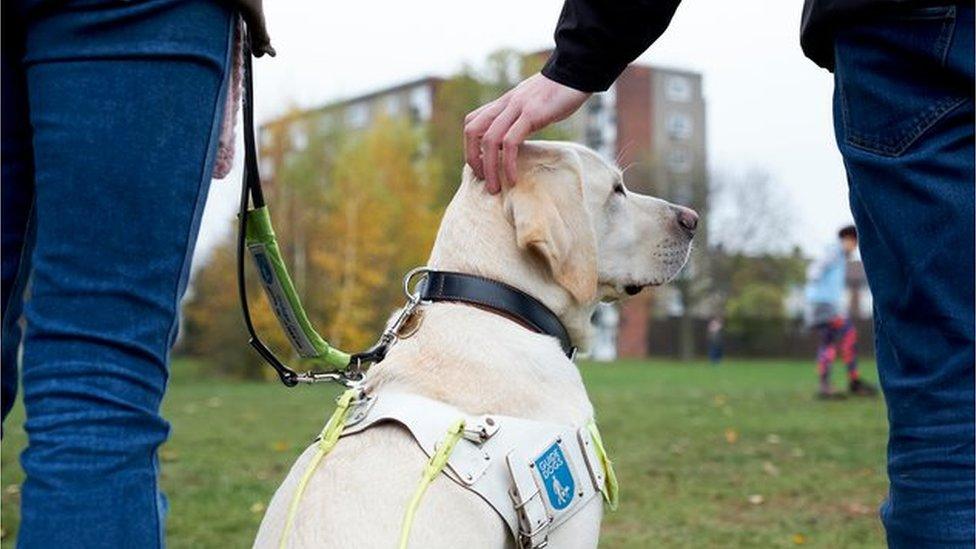Coronavirus: Lockdown measures hinder guide dog training
- Published
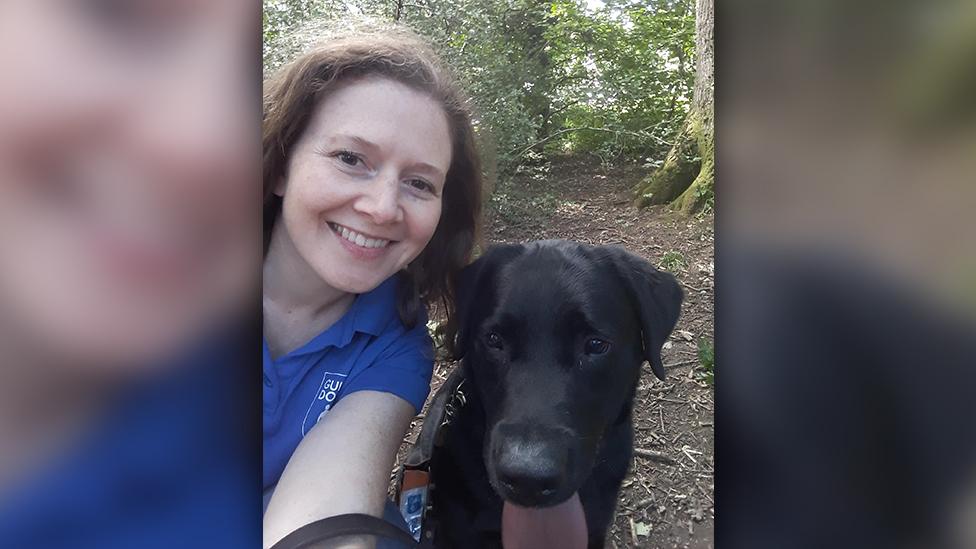
Sian Menai Jones with Perry the Labrador training in Cyncoed gardens
A charity has appealed to the public not to approach dogs being trained as assistance animals who are using public streets more because of coronavirus restrictions on their training centre.
Guide Dogs said only two trainers could use their centre in Cardiff at any one time to abide by distancing rules.
But on the street, friendly passers-by are approaching them and interrupting the dogs' concentration.
Some are breaching social distancing rules with the handlers too.
The pandemic has thrown up challenges from all directions for training guide dogs.
Coronavirus: The volunteers training guide dogs in lockdown
The opposite problem to having too many people around on the streets while the dogs are training is also not having enough in city centres to teach the dogs how to manage crowds once they are ready, or having to stay away for safety reasons.
The trainers are also not able to go on public transport or into shops and cafes as they usually would.
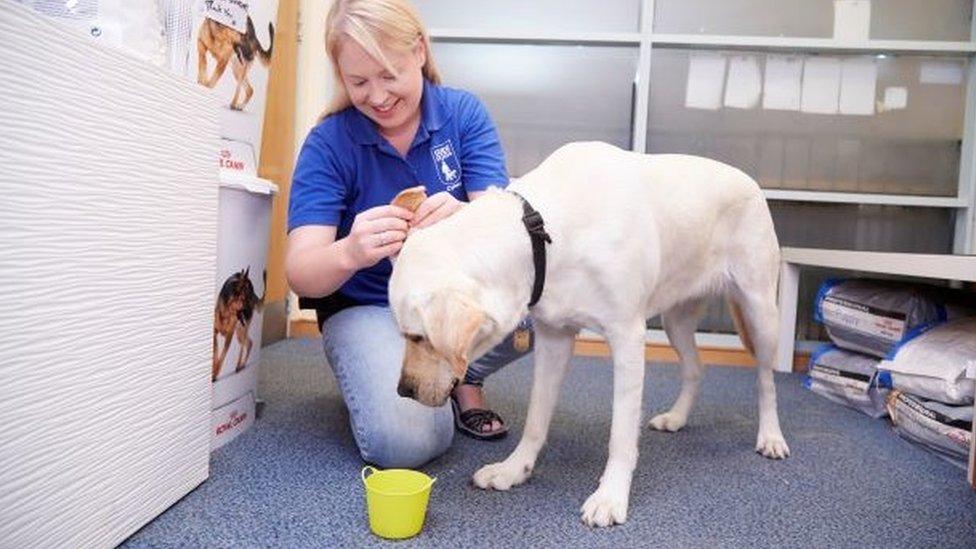
Only two people can be inside the training centre at any one time now
Sian Menai Jones has been a trainer with Guide Dogs for eight years.
She was coming to the end of training with two dogs, Perry and Clover, and was about to begin work with them and their future owners when lockdown began.
"When the dogs first come in, you spend a lot of time in the centre teaching them the basic commands and tricks and then we go to quiet residential areas.
"Then it's the stage where I go to Cardiff city centre and look for busy places, which is difficult at the moment."
Because of social distancing rules, she is having to stick to quiet streets.
"I haven't had too much trouble with people, but some of my colleagues have had a problem with people touching their dogs. You have to ask people not to touch them," she said.
Sian added for the dog, having people interact with them while they were training was "a little bit like if somebody grabs my arm when I'm driving".
"The control and concentration go out of the window," she added.
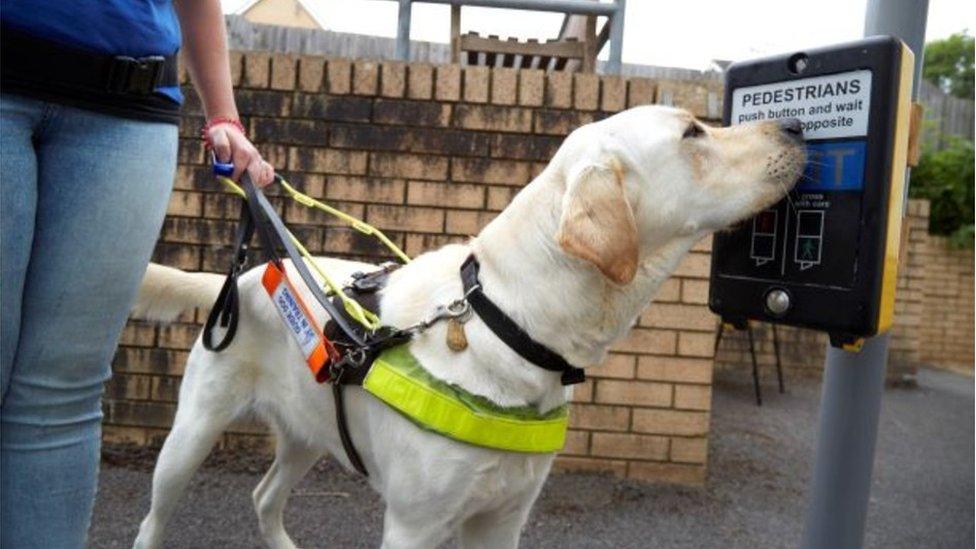
Guide dogs learn techniques in the training centre to apply in the real world
At present, it also potentially puts the handler at risk of infection because people are coming closer than two metres.
"Even with the volunteers [who foster the dogs during training] we keep our two-metre distance.
"We don't go into shops or use public transport," Sian said.
An added difficulty with on-street training is she is not able to step into the road to avoid people when out with the dogs as the last thing they want to do is teach the dogs to habitually move off the pavement.
Equally, a guide dog cannot understand a socially-distanced queue outside a shop.
She said: "The dogs see the gaps [between people] as a way to go through, as they would usually be trained to do in a crowd. Most people will hopefully be understanding."
- Published11 October 2018

- Published11 May 2020
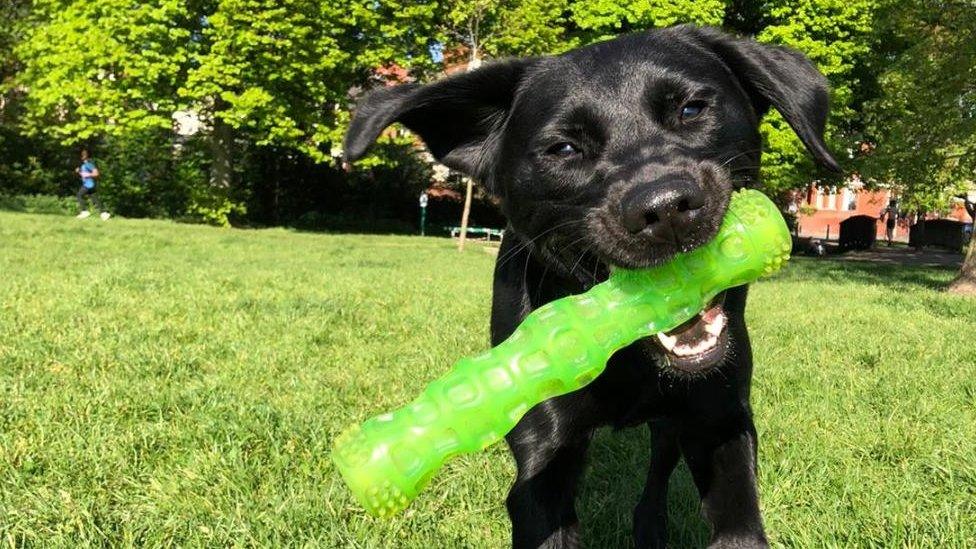
- Published16 May 2016

- Published21 June 2020
